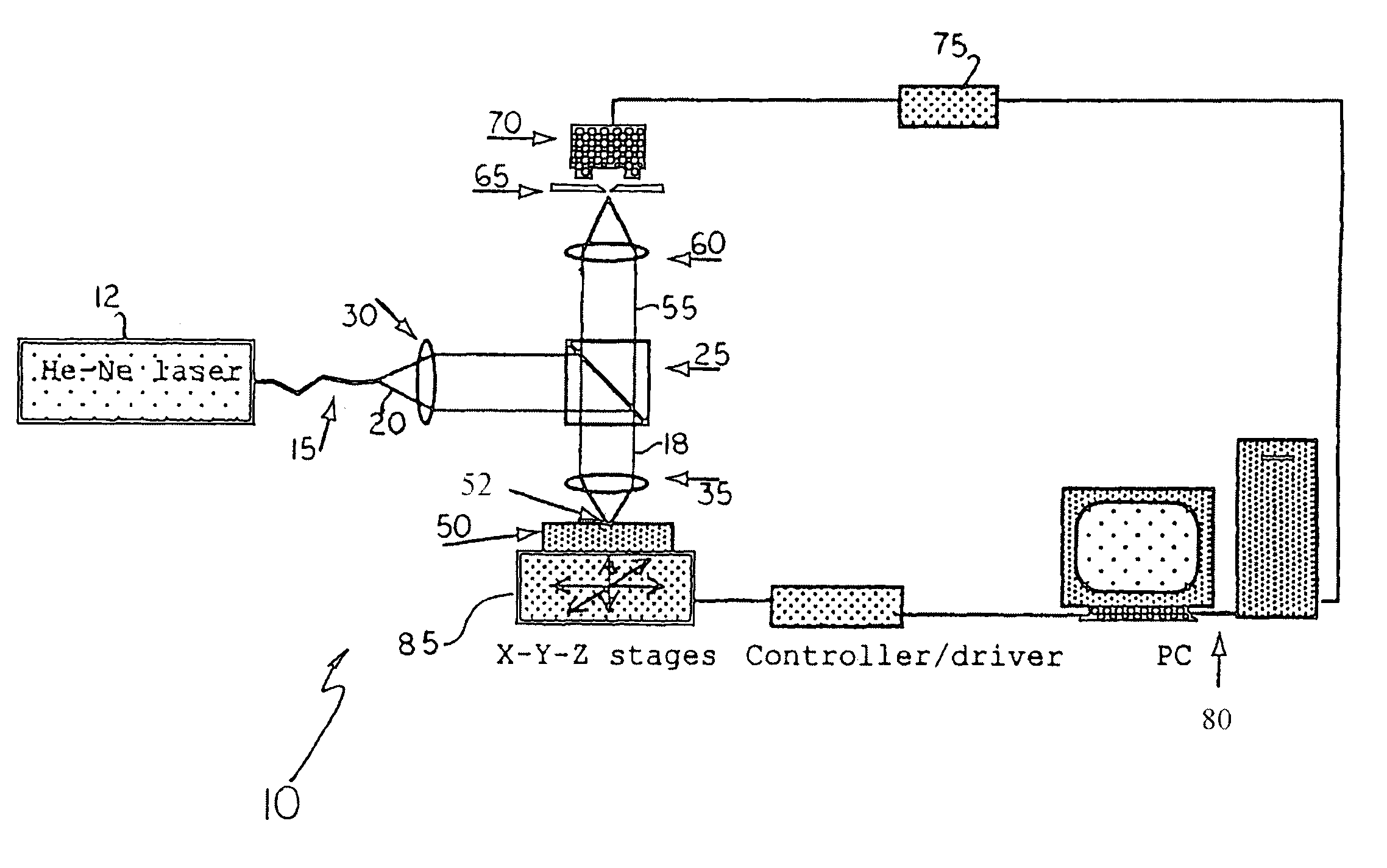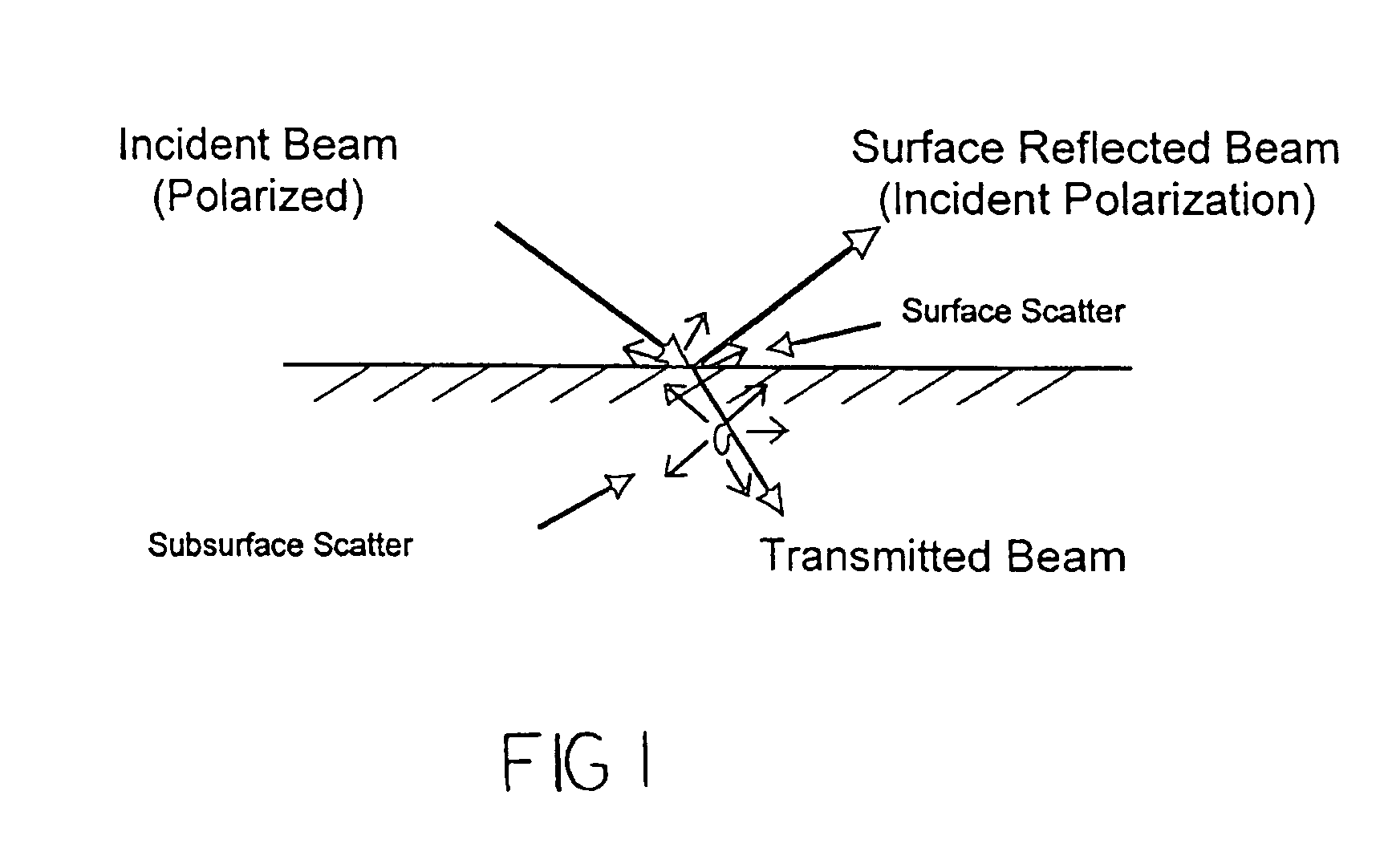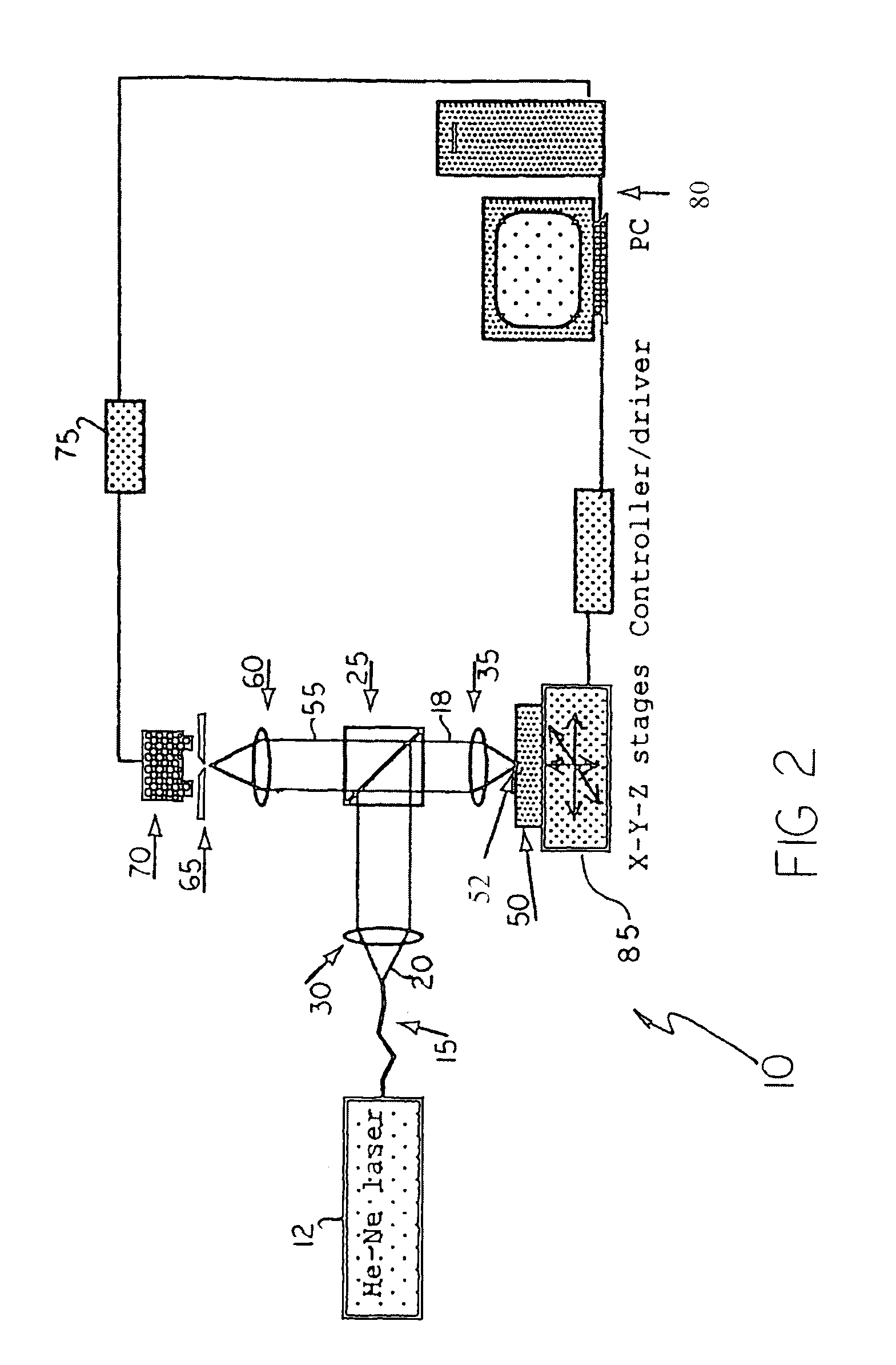Device and nondestructive method to determine subsurface micro-structure in dense materials
- Summary
- Abstract
- Description
- Claims
- Application Information
AI Technical Summary
Benefits of technology
Problems solved by technology
Method used
Image
Examples
Embodiment Construction
[0030]The present invention comprises a new method and device for depth-resolved detection of subsurface micro-structure and other features in dense materials. The materials the micro-structure of which can be studied with the present method and device include translucent materials such as ceramics, ceramic composites, ceramic coatings, silicon, semiconductors, and biological materials. Examples of subsurface structure that can be detected include air pockets, fault lines, the presence of different grain sizes, changes in porosity, interfaces between different structures / materials, etc. . . . These structures exhibit enhanced back scattering of the incident light.
[0031]The invention utilizes cross-polarization detection of subsurface back-scattering with a scanning confocal system to achieve depth resolution of translucent materials. The depth that can be reached depends on the sensitivity of the detector. With a semi-conductor detector one may detect the back-scatter from a depth t...
PUM
 Login to View More
Login to View More Abstract
Description
Claims
Application Information
 Login to View More
Login to View More - R&D
- Intellectual Property
- Life Sciences
- Materials
- Tech Scout
- Unparalleled Data Quality
- Higher Quality Content
- 60% Fewer Hallucinations
Browse by: Latest US Patents, China's latest patents, Technical Efficacy Thesaurus, Application Domain, Technology Topic, Popular Technical Reports.
© 2025 PatSnap. All rights reserved.Legal|Privacy policy|Modern Slavery Act Transparency Statement|Sitemap|About US| Contact US: help@patsnap.com



